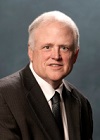
Steve Kujak is the director of Next Generation Refrigerants Research for Trane Technologies (divisions include Trane and ThermoKing). Over the past 29 years, he has been involved in technology development of new refrigerants, absorption chillers and IAQ cleaning technologies Steve has been an author or co-author on 50+ publications related to refrigerants and has 22 patents related to HVAC products.
Steve is a distinguish service member of ASHRAE and is involved in numerous refrigerant safety and use standards used globally by the HVACR industry. He chair of ASHRAE Standard 34 “Designation & Safety Classification of Refrigerants”. He is also a member of many ASHRAE Section 3 technical committees related to refrigerants and lubricants and is also a voting member of Refrigeration Committee Technology Committee for Comfort, Process and the Cold Chain (REF-CPCC).
He was awarded the ASHRAE Crosby Field award for highest rated presentation of a technical paper in 2016 and was also awarded the George Briley Refrigeration Committee award twice for best ASHRAE journal article on refrigeration in 2017 and 2018. He is also involved with AHRI and is participating in the Alternate Refrigerant Evaluation Program (AREP) and the ARTI Flammability Research Subcommittee. Steve is the vice-chair for AHRI-700 standard “Specification for Refrigerants” for the past 10 years He has a BS in chemistry from the University of Wisconsin-La Crosse.
His hobbies include outdoors activities, like gardening, fishing, hunting and camping with his family and also tends to his 13.5 kw solar photovoltaic system. Steve participates with local organizations working on environmental sustainability minded projects, like US Fish and Wildlife, community government sustainability initiatives and his local energy cooperative. Steve is a past president for the Friends of the Refuge-Mississippi River Pools 7 & 8 group which supports the US Fish and Wildlife conservation efforts for local Mississippi River wildlife refuges.
New societal environmental demands to control climate change are driving the development of new regulatory policies to restrict and lower the direct GWP (global warming potential) impact of F-gases. The HVAC&R industry is currently being challenged to invest significant resources to understand the best refrigerants that meet the above requirements. However, there are many uncertainties and challenges given the ever-changing global regulatory environment, within regions, country, state, and sometimes locally by city.
Safe non-flammable low toxicity F-gases allowed for an exponential increase in the standard of living of society through increased food productivity, reduction in heat related deaths, increased worker productivity and migration of people to cities and to hotter climates. The orderly transition from CFCs to HCFCs and HFCs achieved a balance between the societal environmental demands for reduced ozone depletion while continuing to improve the standard of living in developing countries and minimize the societal safety (nonflammable refrigerants) impacts for everyone.
Today designers are being asked to consider new lower direct GWP unsaturated hydrofluorocarbons (HFOs) refrigerants, some of which are slightly flammable under certain conditions, as well as revisiting the application of natural refrigerants, like carbon dioxide, ammonia, hydrocarbons, and water.
This presentation will provide an update on new lower GWP alternatives introduced into the marketplace and will highlight some important considerations, particularly flammability, that engineers, designers, and building owners should keep in mind regarding next-generation refrigerants.
Increasing concerns about the impact of refrigerants on the environment and on climate change are driving new regulatory policies to restrict and lower the global warming potential (GWP) impact of fluorocarbon refrigerants used in the HVAC&R industry. Today equipment designers are being asked to consider new lower direct GWP unsaturated hydrofluorocarbons (HFOs) refrigerants, some of which are slightly flammable under certain conditions. In response, the industry is developing and examining how to safely use flammable refrigerants from hydrocarbons to lower flammable fluorinated refrigerants.
This presentation will provide.
• Overview of ASHRAE Standard 34 – specifically refrigerant nomenclature and safety classifications
• Describe the fundamentals of refrigerant flammability and basics
• Understanding that flammability is a continuum rather than possessing discrete boundaries
• Provide an overview of industry research on flammable refrigerants
• Describe currently available requirements and best practices on the safe handling, storing and transportation of flammable refrigerants
Solar power generation using photovoltaic (PV) panels continues to be one of the fastest growing renewable energy sources. In fact, many characterize capturing energy through PV panels as inexhaustible and sustainable energy source that is reliable for the long term which is cost effective, efficient and is non-polluting. Unfortunately, sustainability means more than generating energy without the consequences of generating greenhouse gases from the burning of fossil fuel. The concept of sustainability is composed of environmental, economic and social impacts.
The presenter installed a 13 kilowatt fixed mounted residential rooftop PV system in June 2018. The system is comprised of 42 – 310 watt panels controlled by 21 micro-inverters. PV systems are marketed as a turn-key installations, easy to maintain and they have matured to the point of being just appliances without the need for monitoring. However, this is far the from the case.
The presentation will cover the challenges and performance of this PV system for the past since installation to today. It will cover challenges with system selection, installation and summarize both electrical generation and economic performance as well as the trials and tribulations. In the end, the audience will understand whether residential rooftop PV solar energy is sustainable. Many might be surprised by the answer.